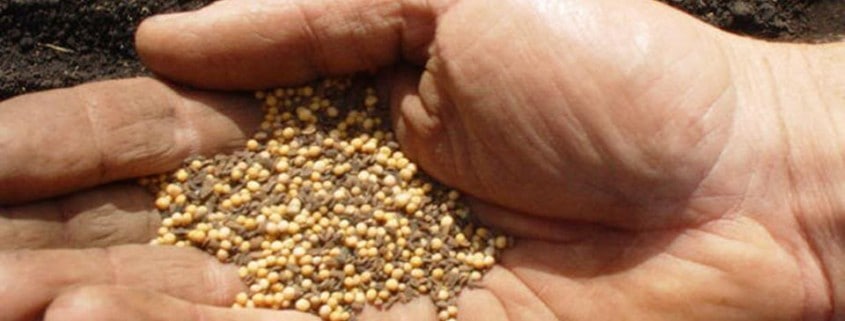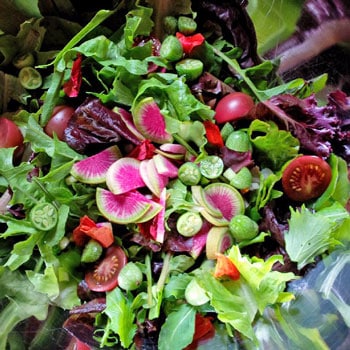Many people are attracted to heirloom seeds and gardening for the variety and flavor. Once they realize that heirlooms are open pollinated seeds that can be saved and replanted year after year, they often ask how to start saving their own seeds.
This is not hard, but there are some basics to understand first. With a little knowledge you will be able to make the choice to save seeds, or realize it’s not something you want to pursue at this point. Please realize that this is an only in introduction, as there are several excellent seed saving books on the subject if you want to learn more.
Short term storage is the largest concern for most home gardeners and even most market growers, as they are looking for a way to have viable seeds for next year, not 10 years from now.
This is the same concern that humans have had since we started planting seeds some 10,000 – 12,000 years ago. There is some confusion as to how to keep seeds viable for a couple of years, as the news about seed banks and the high tech methods have created a false sense of need.
You don’t need high-tech, expensive equipment! You already have everything in your house that you need.
Temperature and humidity are the two main concerns in any seed storage setup. A place that is consistently cool and low humidity are what’s needed, as temperature fluctuations will shorten the life and viability of your seeds.
Your refrigerator or freezer is ideal; you won’t need a lot of room as seeds are usually small.
Short Term Storage
There are environmental concerns to be aware of such as ambient humidity and temperature. If you live in a high humidity environment you will need to take certain precautions, just as if you live in a high temperature area.
In many areas the refrigerator is fine, as long as you put the seeds towards the back and in an area that isn’t exposed to the temperature fluctuations of the door opening. The freezer answers the temperature fluctuations, as it is opened a lot less than the fridge door.
Freezing seeds does not harm them, and can greatly extend their lifespan if done properly.
All seed banks freeze their seeds intended for long term storage! Humidity is a greater concern with freezing, as a blast of warm humid air on frozen seeds can damage them. If you live in a high humidity area, smaller packets of seeds for one years planting will be ideal, as the packet can be pulled from the larger seed storage without exposing the rest of the seeds to temperature/humidity fluctuations.
If you are saving seeds from a seed packet where you didn’t use all of the seeds, keep the packet and put it into a Ziploc baggie. Date the baggie and put it into a gallon sized Ziploc that has the date on it as well.
If you don’t date everything, you will wonder how long the seed has been in storage…
If you are saving seeds from harvest, put all of the info on the baggie- common name, scientific name, date, and any notes you want to remember next year when you pull it out.
This is the time to start a garden/seed journal as well, to document what you planted, what grew well, what challenges you had, bugs, disease, weather, etc. that you will forget in 3 or 4 years.
As with anything you will need to experiment and learn what works best for you and in your specific, unique situation. Some high humidity areas need to store their seeds in smaller quantities and pull the individual packets out of the storage container that are needed for that years planting, put them into another container in the back of the fridge to thaw out for a couple of days, then finally bring them out into the room to finish warming up.
Most areas aren’t nearly as exacting, with the seeds going from the freezer to a covered container on the counter for a couple of days to thaw and stabilize before being planted. One side note, some seeds will germinate better after freezing/refrigerating, as this imitates the natural winter season in the ground.
Longer Term Storage
Long term storage is similar to short term, but the freezer is almost always used, with chest freezers purchased specifically for seeds acting as miniature seed banks.
Only seeds are stored in the freezer and it is opened only a couple of times a year, so temperature swings are minimized. The freezer is usually run at about -15F. Most seeds will last a minimum of 5 years with certain hardy varieties lasting 20+ years!
This is obviously the domain of the serious seed saver. There are a lot of individuals that fall into this category, which surprises many people, who think that serious seed saving and seed banks are reserved for seed companies or government agencies.
Individual seed banks were common until the 1920’s, and are on the rise again. It makes a lot of sense to have a local or community seed bank, as the varieties saved are locally adapted and proven producers; poor performers simply aren’t saved. Local knowledge on what grows well is indispensable and is not possible to have at a company or government level except for possibly at the local level, as the time and interest is just not there.
To start saving seeds, they must be clean and dry, free of vegetable matter or mold/mildew.
Most seeds are intuitive to save, just let them dry on the vine/cob/pod and shell or separate the seeds from the husk/cob/pod and you’re done! Some, like tomatoes need a little more work, such as fermenting the gel coat off of the seeds, washing and then drying them.
Start with an easily processed seed to get the feel and see if this is something you want to do. Also, start with saving something that you like and are interested in eating again.
Be warned though, once you start it becomes a bit of an obsession as you realize that you are starting to take control of your food and the future of what you eat! It is a powerful and liberating feeling. You might even become a food rebel!












